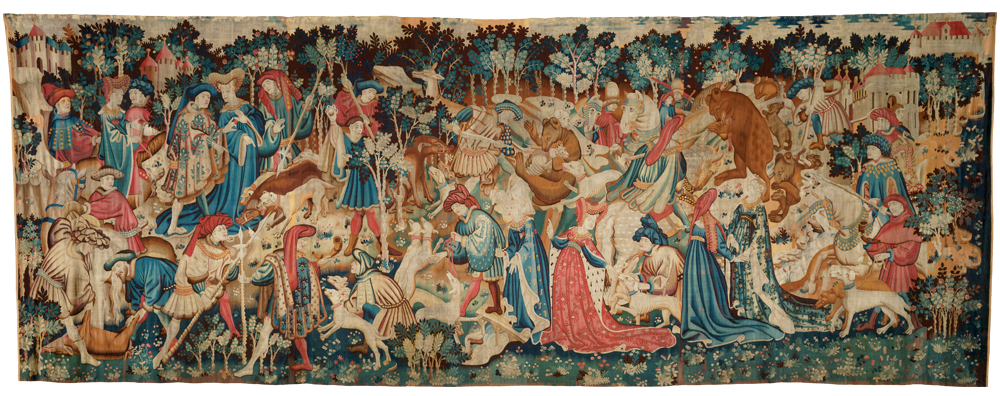A Journey Via Time: Exploring the Wealthy Tapestry of Saint’s Feast Days
Associated Articles: A Journey Via Time: Exploring the Wealthy Tapestry of Saint’s Feast Days
Introduction
On this auspicious event, we’re delighted to delve into the intriguing subject associated to A Journey Via Time: Exploring the Wealthy Tapestry of Saint’s Feast Days. Let’s weave fascinating info and supply recent views to the readers.
Desk of Content material
A Journey Via Time: Exploring the Wealthy Tapestry of Saint’s Feast Days

The liturgical calendar, a vibrant tapestry woven with threads of religion, custom, and historical past, guides the 12 months for a lot of Christian denominations. Central to this calendar are the feast days of saints – days devoted to commemorating the lives and legacies of people deemed holy by the Church. These celebrations, removed from being mere historic markers, supply a profound alternative for religious reflection, group constructing, and a deeper understanding of the Christian religion’s wealthy and various heritage. This text will discover the importance of saint’s feast days, their historic growth, and supply a glimpse into some outstanding examples throughout the liturgical 12 months.
The Historic Roots of Saint’s Feast Days:
The observe of commemorating saints dates again to the early Church. Initially, celebrations targeted on the martyrs – those that died for his or her religion – their deaths seen as final acts of witness and devotion. These commemorations have been usually held on the web site of their martyrdom, remodeling these areas into vital pilgrimage locations. The earliest data counsel casual native celebrations, usually spontaneous outpourings of religion by communities who revered a specific saint.
As Christianity unfold and have become the dominant faith of the Roman Empire, the commemoration of saints turned extra formalized. The Church established a structured calendar, organizing feast days based on the saint’s life and significance. This course of concerned rigorous investigation into the saint’s life, usually involving the examination of historic proof and accounts of miracles attributed to their intercession. The canonization course of, whereas evolving over centuries, aimed to make sure that solely those that exemplified distinctive holiness and advantage have been formally acknowledged and included within the liturgical calendar.
The event of the liturgical calendar was not a uniform course of. Completely different areas and church buildings developed their very own traditions and calendars, resulting in variations within the dates and observances of specific saints’ feast days. The method of standardization started with the rise of centralized church constructions, culminating within the efforts of assorted councils and popes to create a extra unified calendar. Nonetheless, even immediately, some regional variations persist, reflecting the wealthy variety throughout the Christian religion.
The Significance of Saint’s Feast Days:
The celebration of saint’s feast days serves a number of functions throughout the Christian religion:
-
Honoring Holiness: The first objective is to honor the lives and virtues of these deemed holy. Saints aren’t worshipped, however relatively commemorated as examples of religion, love, and dedication to God. Their lives function inspiring fashions for Christians to emulate, providing steering and encouragement on their very own religious journeys.
-
Intercession and Prayer: Many Christians imagine that saints, having attained a state of grace in heaven, proceed to intercede on behalf of the residing. Feast days present a possibility to invoke their prayers and search their help in occasions of want. This perception in intercession underscores the communal nature of religion and the significance of religious help.
-
Group Constructing: Feast days usually contain communal celebrations, together with particular lots, processions, and feasts. These occasions strengthen bonds throughout the Christian group, fostering a way of shared identification and belonging. They supply alternatives for fellowship, mutual help, and the sharing of religion.
-
Historic Remembrance: The celebration of saint’s feast days preserves the reminiscence of people who considerably impacted the historical past of the Church. These commemorations assist to take care of a residing connection to the previous, guaranteeing that the legacy of religion and its heroes aren’t forgotten.
-
Religious Reflection: Feast days supply a structured alternative for religious reflection. The readings, prayers, and homilies related to a specific saint’s feast usually deal with particular features of their life or virtues, prompting deeper contemplation on features of the Christian religion.
Examples of Outstanding Saint’s Feast Days:
The liturgical calendar is wealthy with the feast days of numerous saints. A number of the most outstanding embrace:
-
Christmas (December twenty fifth): The feast of the Nativity of Jesus Christ, the central celebration of the Christian religion. Whereas not technically a saint’s feast day within the conventional sense, it holds the same stage of significance.
-
Epiphany (January sixth): Celebrates the manifestation of Jesus Christ to the Gentiles, represented by the go to of the Magi.
-
Saint Valentine’s Day (February 14th): Whereas the historic Saint Valentine stays considerably obscure, the day is extensively celebrated as a competition of affection and affection.
-
Saint Patrick’s Day (March seventeenth): Celebrates the patron saint of Eire, identified for his missionary work in changing the Irish to Christianity.
-
Easter: A movable feast celebrating the resurrection of Jesus Christ.
-
Ascension Day: Celebrates the ascension of Jesus Christ into heaven.
-
Pentecost: Celebrates the descent of the Holy Spirit upon the apostles.
-
All Saints’ Day (November 1st): A day to honor all of the saints, identified and unknown.
-
All Souls’ Day (November 2nd): A day of prayer for the souls of the departed.
-
Saint Nicholas Day (December sixth): Celebrates the lifetime of Saint Nicholas, the inspiration for the modern-day Santa Claus. This present day emphasizes acts of charity and generosity.
These are just some examples; the liturgical calendar is crammed with numerous different vital feast days, every with its personal distinctive story and significance. Exploring these celebrations can present a wealthy and rewarding journey by the historical past and traditions of the Christian religion.
The Ongoing Relevance of Saint’s Feast Days:
In a quickly altering world, the celebration of saint’s feast days stays remarkably related. In an age usually characterised by individualism and secularism, these celebrations supply a significant counterpoint, reminding us of the significance of group, religion, and the enduring energy of human goodness. The lives of the saints, with their struggles, triumphs, and unwavering religion, supply inspiration and hope, reminding us that holiness is attainable and that even within the face of adversity, religion can endure. The continued observance of saint’s feast days serves as a testomony to the enduring energy of the Christian religion and its capability to encourage and rework lives. By remembering and celebrating the lives of those holy people, we not solely honor their legacies but additionally enrich our personal religious journeys and strengthen the bonds of religion inside our communities. The liturgical calendar, with its wealthy tapestry of saint’s feast days, continues to information and encourage believers throughout the globe, providing a timeless reminder of the enduring energy of religion and the unwavering spirit of humanity.








Closure
Thus, we hope this text has offered invaluable insights into A Journey Via Time: Exploring the Wealthy Tapestry of Saint’s Feast Days. We thanks for taking the time to learn this text. See you in our subsequent article!